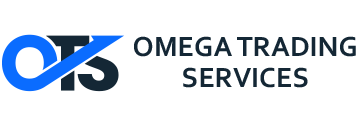When ERP software is delivered as a service in the cloud, it runs on a network of remote servers instead of inside a company’s server room. The cloud provider patches, manages, and updates the software several times a year—rather than an expensive upgrade every 5 to 10 years with an on-premises system. The cloud can reduce both operational expenses (OpEx) and capital expenses (CapEx) because it eliminates the need for companies to purchase software and hardware, or hire additional IT staff. These resources can instead be invested in new business opportunities, and the organization is always up-to-date on the most recent ERP software. Employees can shift their focus from managing IT to more value-added tasks such as innovation and growth.
- Having access to real-time information about a business’s operations is a powerful feature of enterprise systems.
- The cloud provides an ideal environment for ERP as it is an accessible, reliable, secure, and highly scalable platform for mission-critical software.
- They can integrate with existing databases or, ideally, run on newer, powerful in-memory databases.
- Like all software, a database management system (DBMS) must support the hardware platform and operating system it runs in.
- Once it’s implemented, managers can easily track every dollar that comes into and goes out of an enterprise.
- Microsoft (MSFT) has long been an industry leader, with many customers using multiple software applications from the company.
These systems are used as a central command hub to help automate the business and make reporting and decision making easier. Information Technology has become one of the most important resources to operate and manage organizations in the 21st century. It touches every facet of a modern enterprise, from customer service to operations, to social media, and to security.
What Are ERP System Modules?
See the industry-leading enterprise resource planning (ERP) cloud solution, serving as your integrated management of business processes and applications, to gain resilience and real-time agility, to position yourself for growth. ERP applications can help a corporation become more self-aware by linking information about production, finance, distribution, and human resources together. Because it connects different technologies used by each part of a business, an ERP application can eliminate costly duplicates and incompatible types of enterprise software technology. The process often integrates accounts payable, stock control systems, order-monitoring systems, and customer databases into one system. With ERP integration, companies can gain a unified view of information from different systems, increase business process efficiency, improve customer experiences, and facilitate collaboration across teams and business partners. Using an Enterprise Resource Planning (ERP) system can be a major benefit for companies looking to streamline their customer service experience.
A business intelligence module accumulates and inspects data from various sources and helps users define a better organization’s solution. Some notable features include scheduled reporting, visualization tools, customizable dashboards, and real-time data access. Their antiquated inventory tracking system did not account for changing costs, and the accounting software could not record the metrics needed for key financial statements. These breakdowns created manual processes, which further compromised time and resources. Although data warehousing or business intelligence systems are enterprise-wide packaged application software often sold by ES vendors, since they do not directly support execution of business processes, they are often excluded from the term.
Sustainability for People, Planet and Profits: Understanding the Triple Bottom Line
Thus, to obtain the maximum benefit from enterprise resource planning software, the organizations should change their way of working according to the business processes of software instead of customizing the software. Generally there are three deployment options for ERP systems; Cloud-based, on-premise, and a hybrid of the two. Within these options, a business can choose from hundreds of types such as finance, supply chain management, and human resource management. Enterprise resource planning (ERP) is a platform companies use to manage and integrate the essential parts of their businesses.

Stand-alone version control and configuration management programs handle this, and parts of these systems are increasingly built into the development systems themselves (see configuration management). Logistics relies on well-running ERP software to deliver the right products and services to customers on time. Management needs instant visibility into the company’s performance to make timely decisions. And banks and shareholders require accurate financial records, so they count on reliable data and analysis made possible by the ERP system. The business processes in each business function were disparate and not capable of sharing information with each other. It was difficult for the managers to assemble the data fragmented into separate systems in order to present an overall picture of the organization’s operations and take firm-wide decisions.
Learn how to change mindsets, connect silos, and center around your customer.
With so much data at your fingertips, you need a way to harness it to make beneficial changes within your organization. With business intelligence (BI) software, you can analyze data across various departments to quickly make smarter, more informed business decisions. A business that’s rapidly expanding requires software that’s flexible and scalable enough to adapt to its changing needs.
Regulations such as the Sarbanes-Oxley Act demand that investors receive a significant amount of data about a company’s operations, including information about the properties, assets and inventory management. One of the benefits of enterprise management systems is that much of the data these regulations require can be collected through automated means. Thus, enterprise systems can be used to ensure compliance with increasingly onerous federal regulations without taking personnel away from their essential customer service functions. Enterprise resource planning (ERP) refers to a type of software that organizations use to manage day-to-day business activities such as accounting, procurement, project management, risk management and compliance, and supply chain operations. A complete ERP suite also includes enterprise performance management, software that helps plan, budget, predict, and report on an organization’s financial results. Enterprise systems (ES) are large-scale enterprise software packages that support business processes, information flows, reporting, and data analytics in complex organizations.
Reduce costs.
ERPs allow businesses to automate their customer service process, which helps ensure that each employee is giving customers a consistent experience, and also ensuring that back office functions are as streamlined as possible. Automation saves time, which can then be used towards efforts to respond to customer requests for product information and to forecast for new products. If employees are spending less time on tracking down a customer’s order, they can spend more time developing long-lasting, profitable customer relationships.

With ERP software, each department still has its system, but all of the systems can be accessed through one application with one interface. An ERP software system can also integrate planning, purchasing inventory, sales, marketing, finance, human resources, and more. From a hardware point of view, enterprise systems are the servers, storage and related programming software that large organizations use as the establishment for their IT infrastructure.
What is enterprise software?
Finding cloud applications that complement your legacy ERP software modules lets you immediately take advantage of rapidly advancing new technologies and improving user paradigms. These provide complimentary systems that deliver immediate business capabilities and value without a fundamental change in your operations. Large companies with global or subsidiary operations need a robust, market-leading ERP system with embedded AI, machine learning, and analytics – and intelligent automation to transform business models and processes. ERP systems can be deployed on premise, in the cloud, or in a hybrid scenario depending on business need.
Netlify Launches Composable Web Platform for Enterprise Devs – The New Stack
Netlify Launches Composable Web Platform for Enterprise Devs.
Posted: Thu, 19 Oct 2023 16:06:23 GMT [source]
Managers can also use HCM to familiarize new employees with their company’s products and procedures. With EAM software, you can stay up-to-date on scheduled maintenance activities, meet compliance requirements and more. More specifically, it’s meant to help you cultivate and nurture leads, and then transform those leads into clients and long-term accounts. Once all departments are tied into the system, all data is collected on the server and becomes instantly available to those with permission to use it. Reports can be generated with metrics, graphs, or other visuals and aids a client might need to determine how the business and its departments are performing.
Product Lifecycle Management
This helps you to grow lasting, more profitable relationships with your customers. With third-party integrations it is possible to make payment transactions safer, faster, and easier. With these services, the program can adjust to large-scale business needs without decreasing high standards of performance. For example, marketing staff can use the information from the sales about the most frequent client’s needs, and the sales specialists can benefit from the marketers’ database. Nations and economic zones like the European Union (EU) have become more active in their regulation of data in the digital age.

